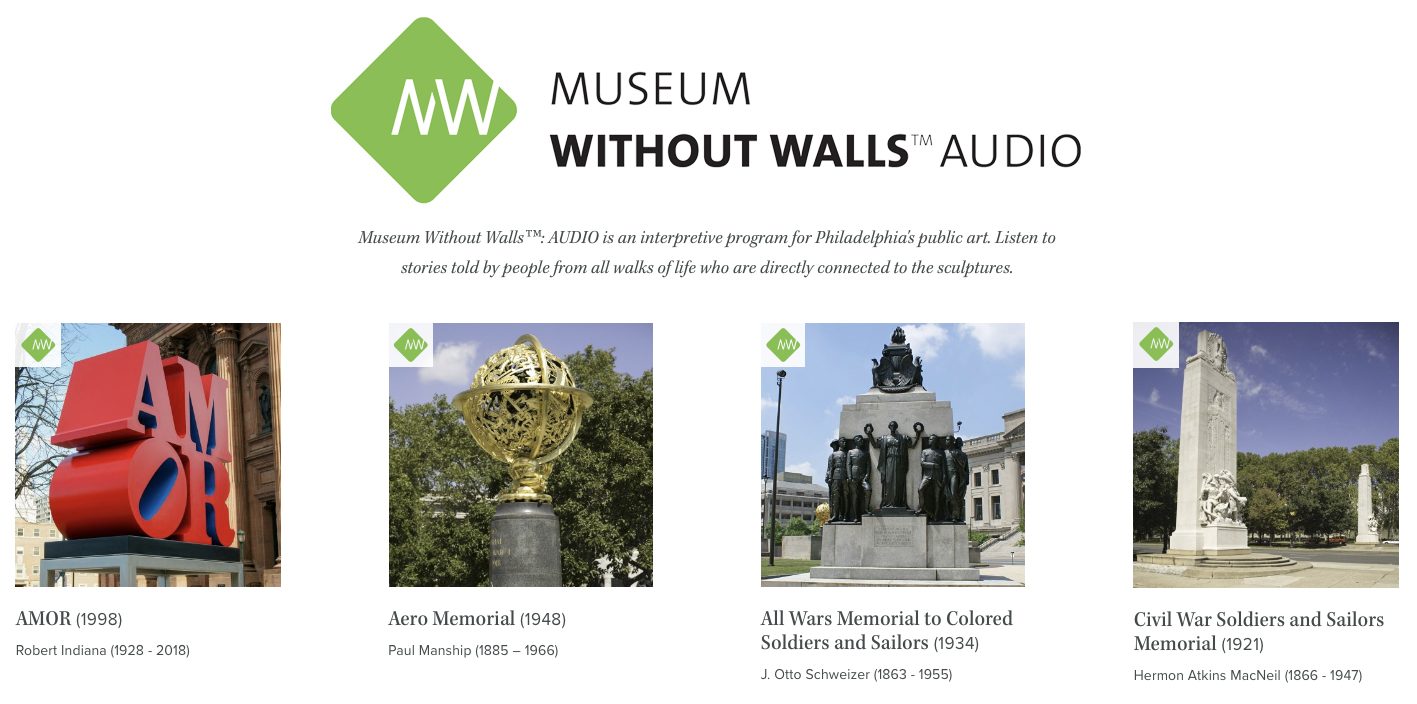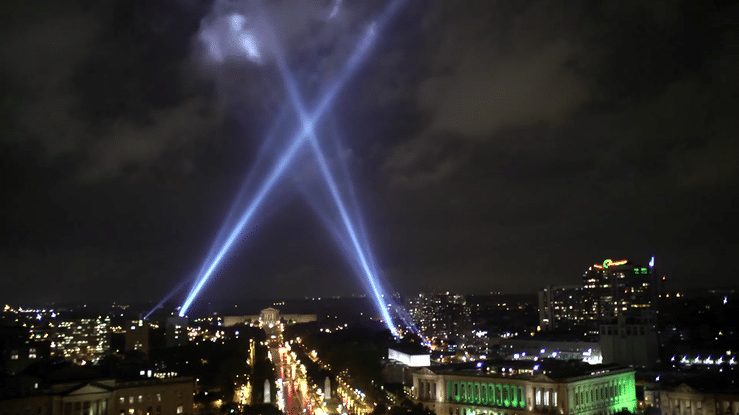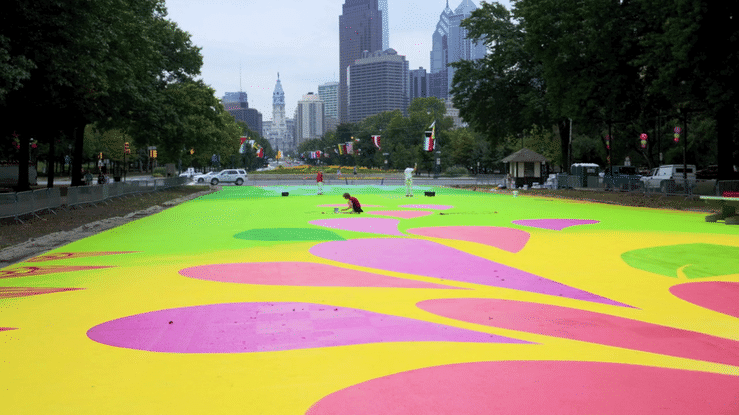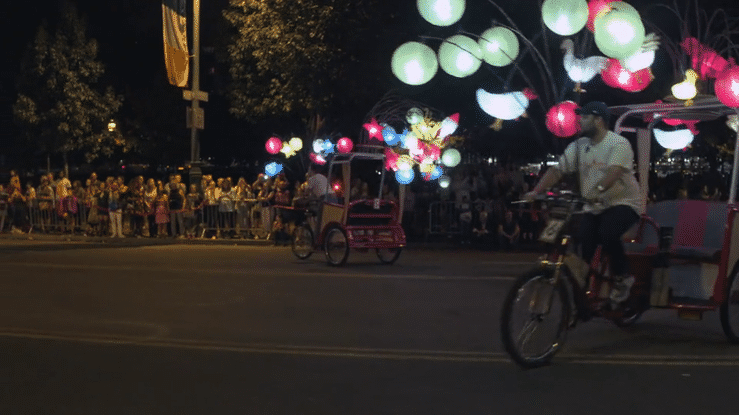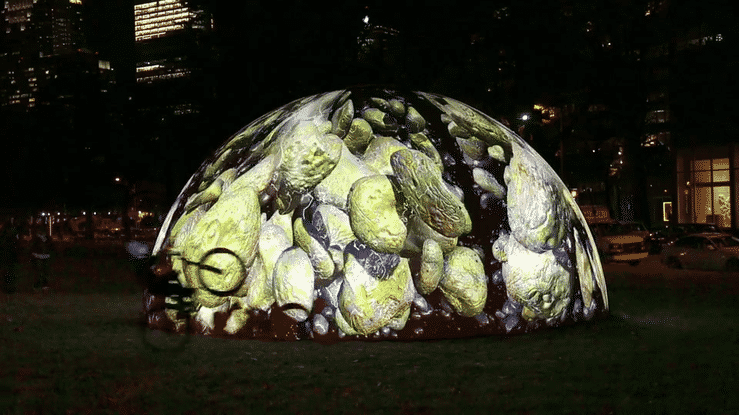Over the years, the Association has continued to advocate for good civic design, the commissioning and placement of permanent and temporary public art along the Parkway, and the presentation of innovative public programming.
Philadelphia’s Benjamin Franklin Parkway is now more than a century old – and the Association for Public Art (founded in 1872) has played a significant role in the development of this historic boulevard. Inspired by the Champs-Élysées in Paris, the Parkway is broad and green, lined with museums and institutions, and marked by fountains and outdoor sculpture. It was the Association for Public Art (formerly the Fairmount Park Art Association) that commissioned the first comprehensive plan for the Parkway in 1907, and created a “Committee on a Municipal Art Gallery” that same year, which set the stage for the realization of the Philadelphia Museum of Art. Over the years, the Association has continued to advocate for good civic design, the commissioning and placement of permanent and temporary public art along the Parkway, and the presentation of innovative public programming.
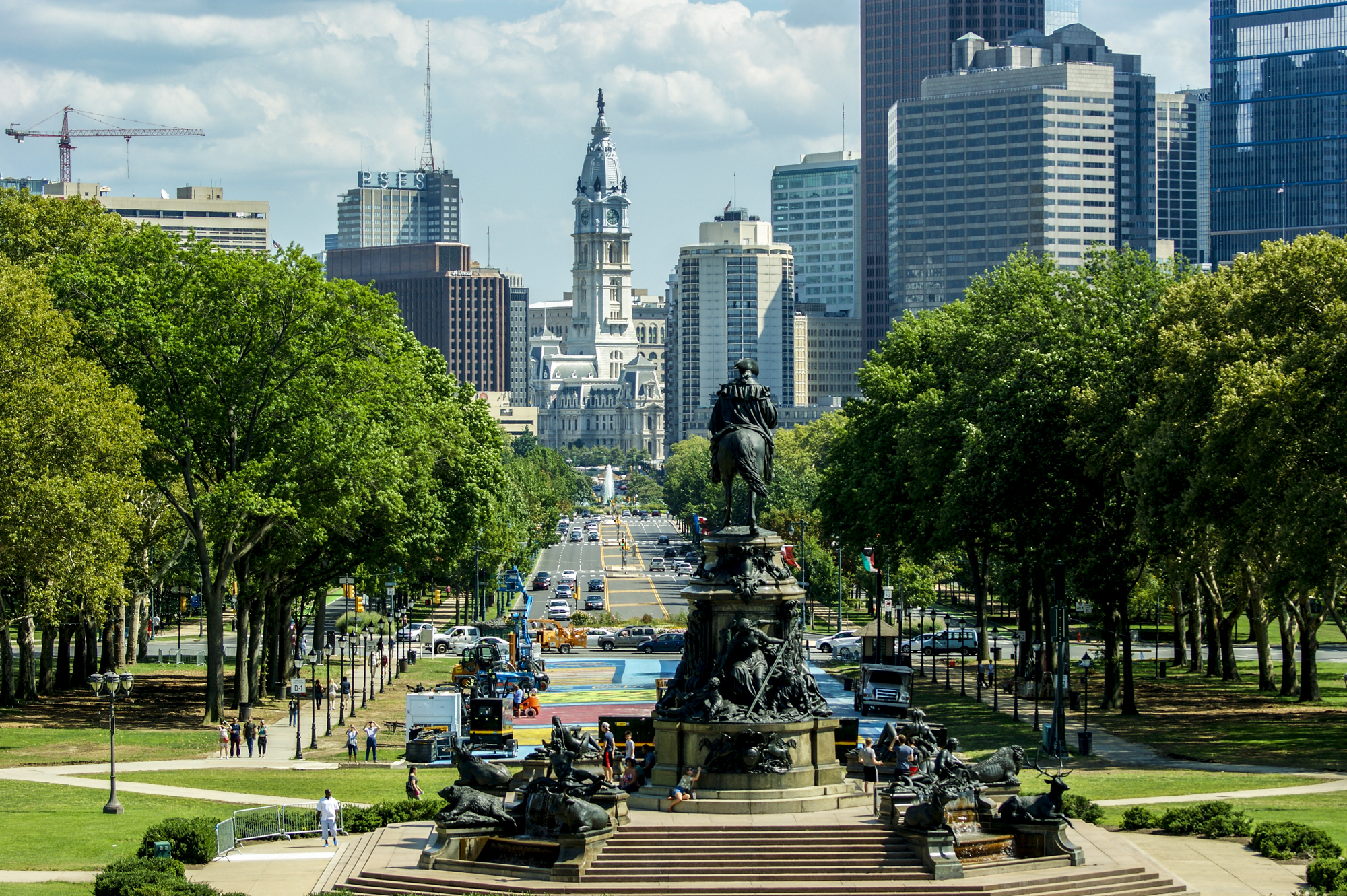
Association’s Role in Earliest Parkway Plans
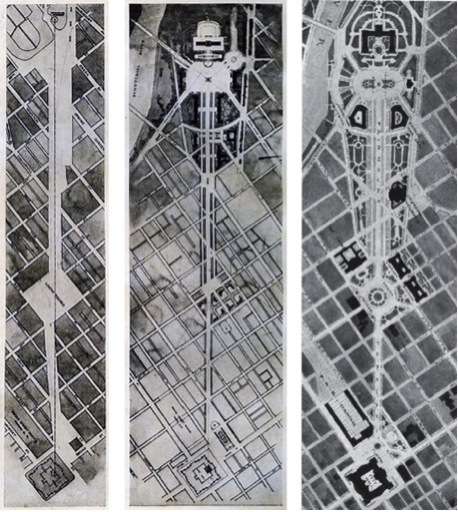
Conceived as early as 1871 and substantially completed by 1929, the Benjamin Franklin Parkway stands as a major triumph in urban planning with unmistakable French influence.
Though preliminary proposals for the Parkway had been produced and even added to the City Plan in 1906, it was not until the Fairmount Park Art Association (now the Association for Public Art) commissioned a comprehensive plan for the “Fairmount Parkway” in 1907 that the project would finally launch. (Its name was officially changed to the Benjamin Franklin Parkway in 1937.)
The Art Association gathered a team of architectural experts – Horace Trumbauer, Clarence Zantzinger and his partners, and Paul Cret – who created a detailed parkway design that was added to the City Plan in 1909. Ground officially broke on the project in 1907, with the demolition of approximately 1300 properties that the city had acquired for the project. Construction on the Parkway did not begin until ten years later in 1917, when French landscape architect Jacques Gréber submitted a revised plan to the Commissioners of Fairmount Park.
Read the full story: The Benjamin Franklin Parkway: Philadelphia’s French Connection
VIDEO: Discover the story of the Parkway in this commemorative audio program, Parkway at 100: Dreams into Reality. Voices heard: Penny Balkin Bach is the former Executive Director & Chief Curator of the Association for Public Art and the author of many books and articles about Philadelphia’s public art. David Brownlee is an architecture historian and professor at the University of Pennsylvania, and the author of Building the City Beautiful: The Benjamin Franklin Parkway and the Philadelphia Museum of Art. Producer: Alex Lewis | Learn more about Museum Without Walls: AUDIO
A Preeminent Outdoor Sculpture Collection
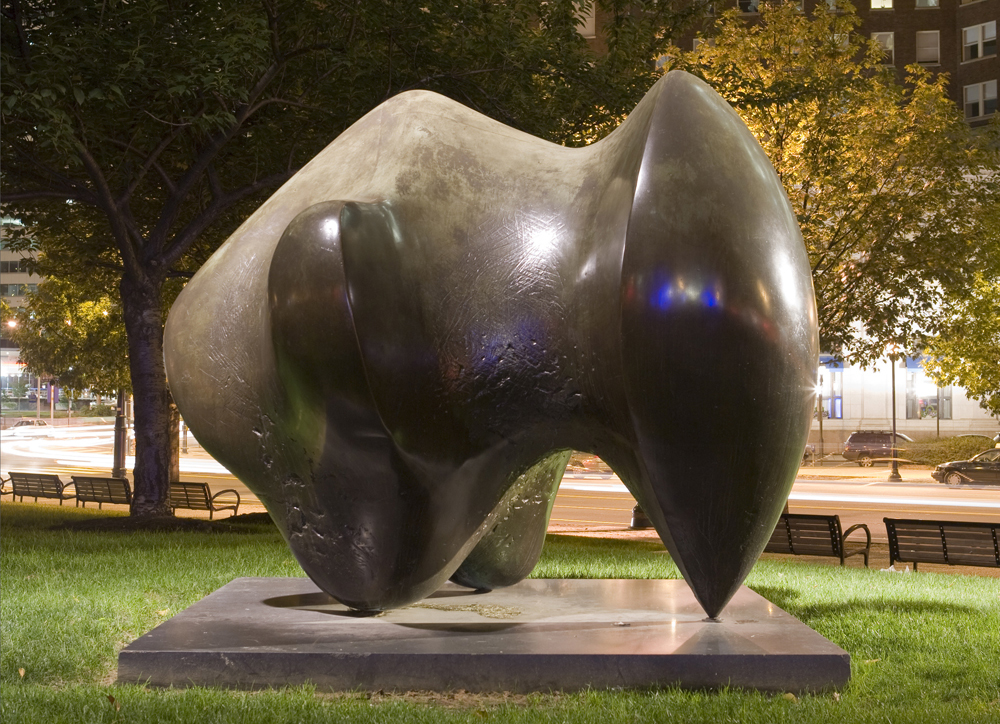
The Association for Public Art has commissioned and placed a number of outdoor sculptures on the Parkway, which has a collection that visually parallels the history of American sculpture.
One of the Association’s first projects on the Parkway was the acquisition and installation of The Lion Fighter and The Mounted Amazon at the steps of the new Philadelphia Museum of Art building in 1929. Other early projects include commissioning Alexander Stirling Calder’s Shakespeare Memorial with the City and Shakespeare Memorial Committee, which was installed in 1928 at the Free Library, and commissioning Emmanuel Frémiet’s Joan of Arc, which the Association moved to the Parkway in 1948. Decades later, the Association acquired and installed Barbara Hepworth’s Rock Form (Porthcurno) and Henry Moore’s Three Way Piece Number 1: Points, which now join Alexander Calder’s Three Discs, One Lacking at 16th Street. Together they form a small sculpture park of related works from the 1960s.
More recently, the Association acquired and installed Mark di Suvero’s Iroquois and Roxy Paine’s Symbiosis at 24th Street in what is now called “Iroquois Park” (in 2007 and 2014, respectively); brought Robert Indiana’s AMOR to the Parkway in collaboration with the Philadelphia Museum of Art on the occasion of the 2015 Papal visit; and in 2021, installed Gerhard Marcks’ Maja in a new public park at the Park Towne Places Museum District Residences called “Maja Park.” The Association has also worked with Center City District to light and sign the Parkway’s impressive sculpture collection, and launched an outdoor sculpture audio program called Museum Without Walls™: AUDIO to further interpret these artworks. Visit Museum Without Walls™: AUDIO to hear the stories behind many of the sculptures on the Parkway.
Spectacular Public Art Installations
In addition to placing permanent outdoor sculpture, the Association for Public Art has commissioned spectacular temporary public art installations for the Parkway in recent years. These projects reflect contemporary art practices, highlight new directions in public art, and have helped to activate the Parkway in exciting new ways.
OPEN AIR by Rafael Lozano-Hemmer
Thousands of people from all over the world participated in Rafael Lozano-Hemmer’s OPEN AIR (2012), making it the largest crowd-sourced public art project ever seen in Philadelphia. Commissioned by the Association for Public Art, OPEN AIR was a world-premiere interactive light installation that ran nightly from September 20 – October 14, 2012. 24 powerful robotic searchlights on the Parkway created unique, dynamic light formations in response to participants’ voice recordings and GPS locations. The project was inspired by the city’s rich tradition of democracy and respect for free speech. www.openairphilly.net
Magic Carpet by Candy Coated
Artist Candy Coated transformed The Oval in front of the Philadelphia Museum of Art into a magical environment of color, pattern, illusion, and movement with Magic Carpet (2014), an installation commissioned by the Association for Public Art. The artist’s exuberant design included 3-D illusion art, brilliantly colored sandboxes, oversized game boards, and her signature decorative motifs rendered in vinyl, among other unique attractions. Magic Carpet was featured from July 16 – August 17, 2014 at The Oval, an initiative of Philadelphia Parks & Recreation in partnership with the Fairmount Park Conservancy.
Fireflies by Cai Guo-Qiang
Presented on the occasion of the Parkway centennial, Cai Guo-Qiang: Fireflies (2017) was a major site-specific work by internationally acclaimed artist Cai Guo-Qiang along the Parkway. The project was commissioned by the Association for Public Art with Fung Collaboratives, with major support from The Pew Center for Arts & Heritage. The whimsical, interactive work invited the public to experience the Parkway as a nocturnal dreamscape conjured from the languorous movements of hundreds of illuminated handcrafted Chinese lanterns, held aloft by a fleet of 27 pedicabs that the public could take free rides in.
Winter Fountains by Jennifer Steinkamp
Winter Fountains (2017) served as a centerpiece for the Parkway centennial, illuminating the Parkway at night for several months during the winter. Inspired by the nearby fountains, four large architectural domes glowed with Jennifer Steinkamp’s phantasmagoric and dream-like animated video projections. The imagery reimagined the formation of electricity in clouds, inspired by Benjamin Franklin’s research and evoking the art and science explorations represented by the Parkway institutions. The project was presented by the Parkway Council and commissioned by the Association for Public Art, with major support from the William Penn Foundation.
Public Programs and Events
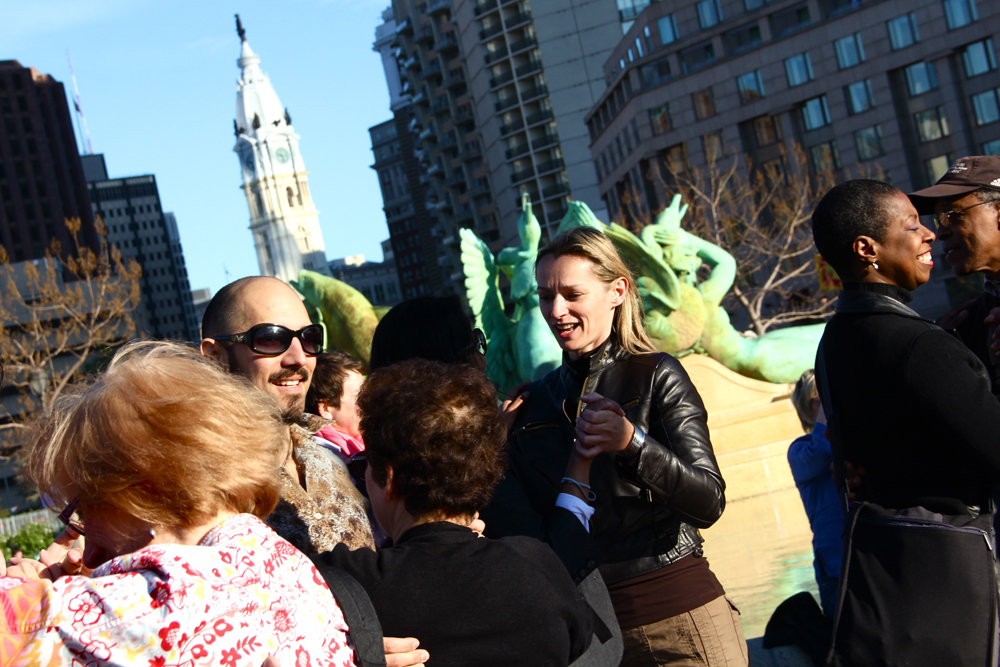
Many of the Association for Public Art’s free public programs and events to promote Philadelphia’s extraordinary public art collection take place on the Benjamin Franklin Parkway.
Family-friendly programs like “Sculpture Saturdays” (2010) and “Sculpture Zoo” (2019) in Logan Square offered sculpture-making workshops and live animal sculpture demonstrations led by local artists. A series called “Site Seeing” (2012) reimagined a historic tango dance event at Swann Memorial Fountain that took place in the 1920s when the fountain first turned on, and giant balloons marked sculptures along the Parkway that directed people to “Public Art Ambassadors” stationed at them. “Public Art in Focus” (2016) presented a series of public art photography workshops on the Parkway taught by guest photographers and included a photo contest.
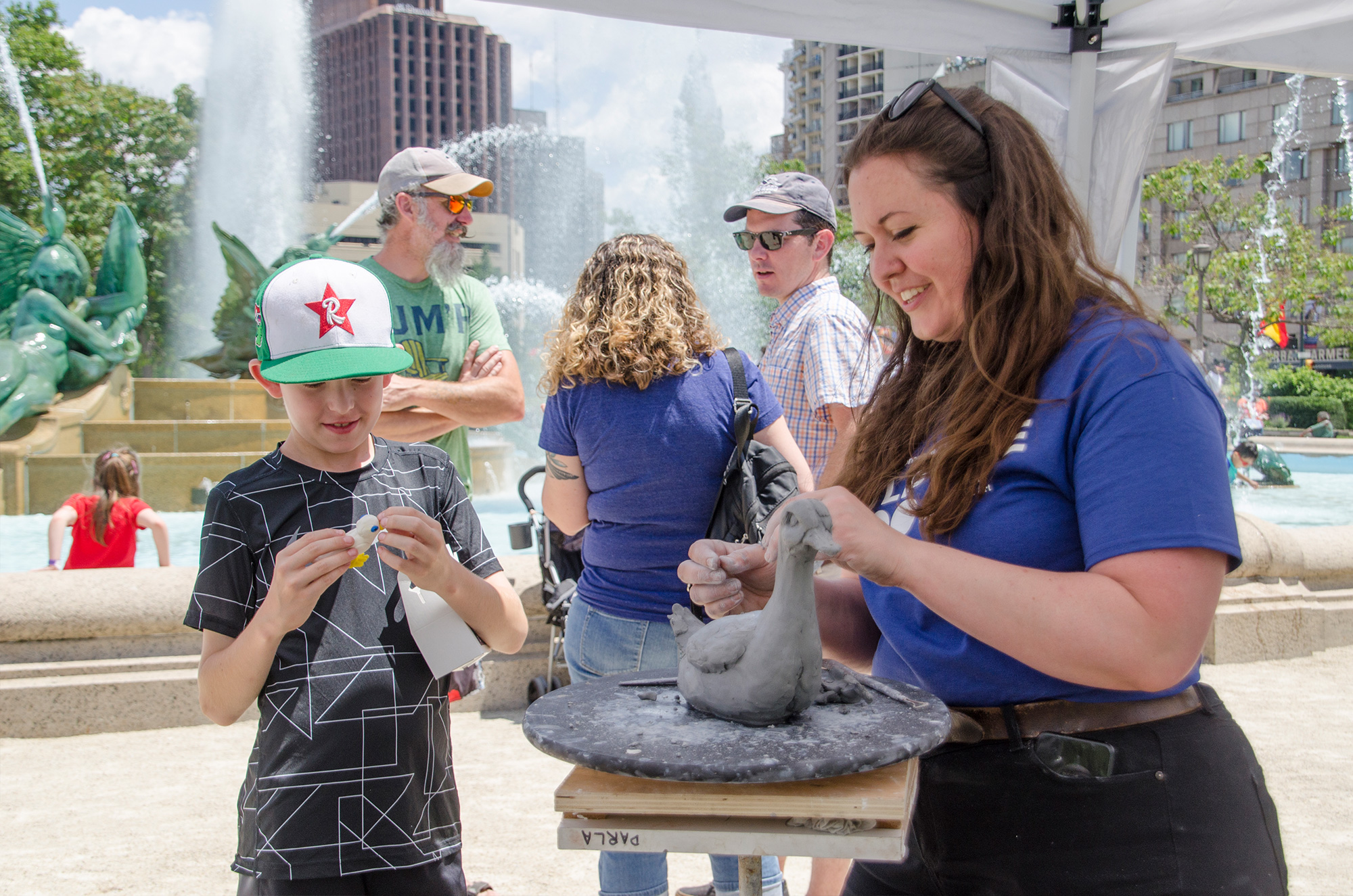
Walking and bike tours on the Parkway and in nearby Fairmount Park are also a significant part of the Association’s public programming. Tours are enjoyed by Association for Public Art members, conference attendees, visiting journalists, dog owners and their pups (see the Association’s “ArtPup” dog walk and tour), and in partnership with organizations that include Jane’s Walk, the International Sculpture Center, AIA Philadelphia, the Philadelphia Convention & Visitors Bureau, Fairmount Park Conservancy, WHYY, Feet First Philly, and the Bicycle Coalition, among others.
IMAGE AT TOP: Swann Memorial Fountain at night by “Public Art in Focus” photo contest winner Bill Raich
